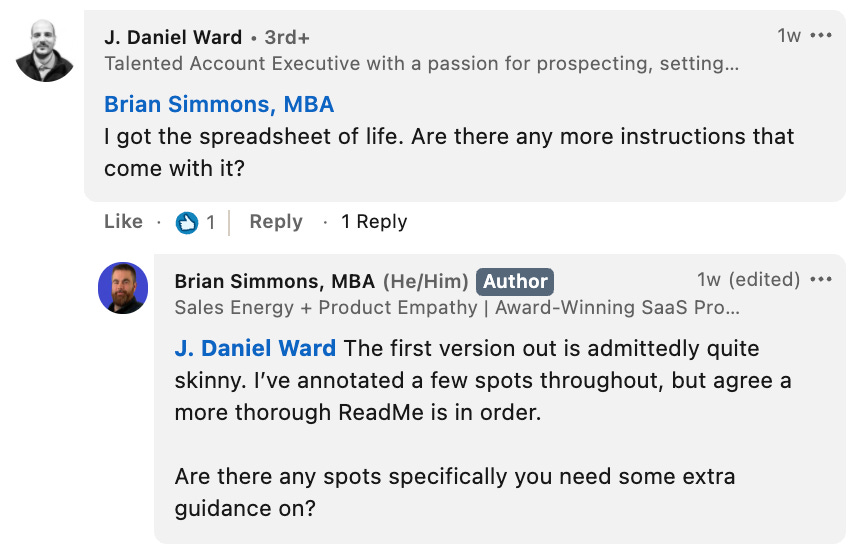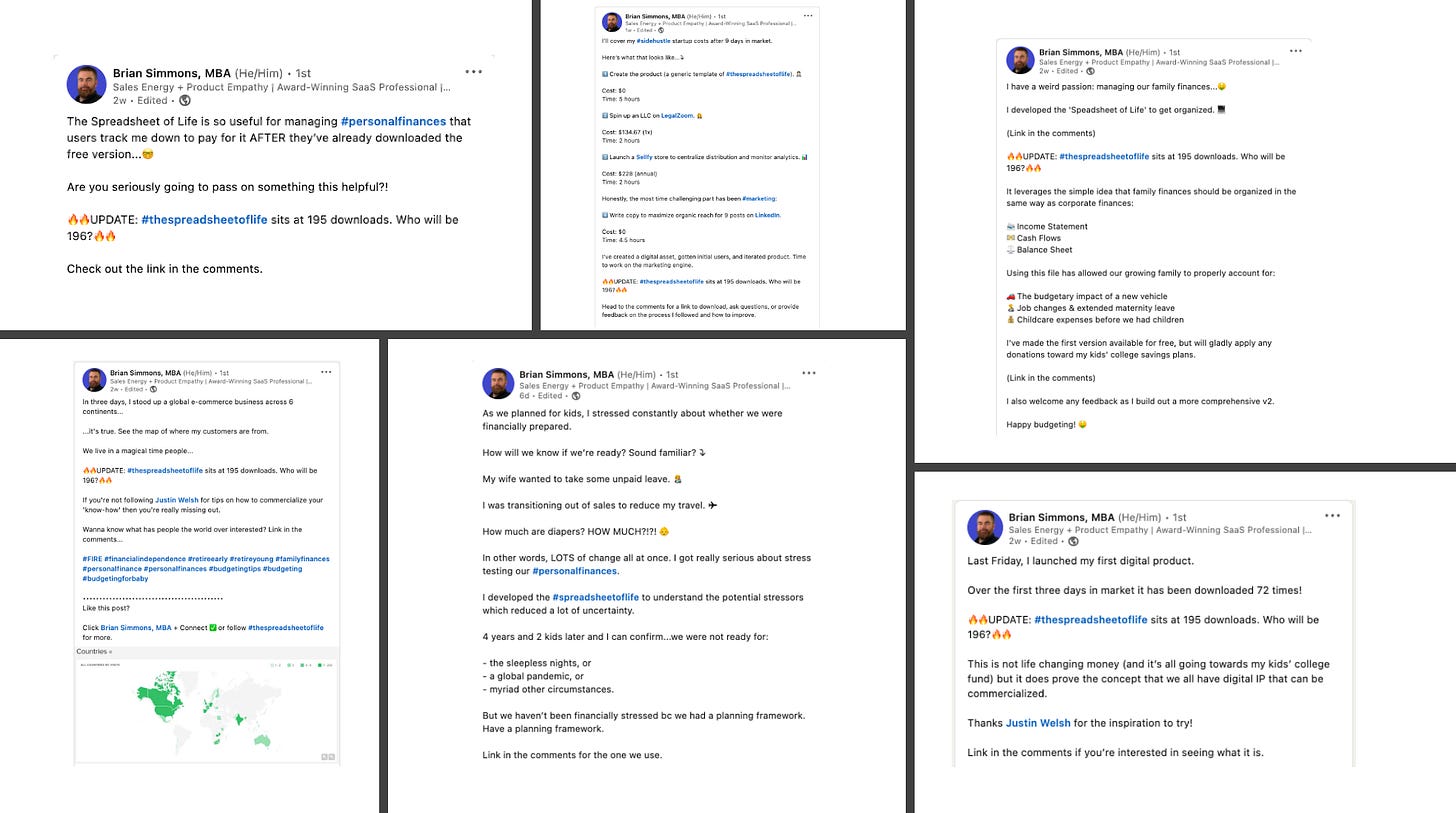
How To Create Side Projects Without Code
Jul 24, 2022Bottom Line Up-Front: One of the many ways to transition into Product Management is through side projects and these do not have to include code in them. The goal of your side projects is to demonstrate transferrable skills when talking with recruiters and hiring managers.
Side Projects should follow the same approach that PMs use every day: After finding a Pain-Point: Talk to users, Prototype, Get Feedback, Iterate.
There are many different ways to break into Product Management. Building side projects is just one of the many ways to do it. But, why are side projects important? Can’t you just prepare your resume, apply and get an interview?
Well… yes… and no…
Side projects are a way to show recruiters and, more importantly, hiring managers that you have the necessary transferrable skills to do the job. Product Management is not about having an engineering degree or a master’s degree. Product Management is about thinking like a PM to bring amazing products to life that solve customer pain-points… Because we’ve all seen cool products that don’t necessarily solve, well, anything.

Do you need to know how to code to build a side project?
Product Managers don’t typically code in our day to day, although some have the initiative to do so and Engineering teams are grateful for having an extra pair of hands helping them.
So… If you don’t need to know how to code, why should your side projects have code in them? Remember that as a Product Manager, you are hired to drive your team and the business forward through products that solve customer pain-points.
To simplify things, here are a few ways to think about side projects. All of them are equally great ways to show your abilities as a Product Manager:
-
If you do know how to code (or want to learn how to), you can build an app, a website or some piece of software.
-
If you don’t know how to code, you can outsource the coding part (or pay some engineering friends with pizzas) and build an app, a website or some piece of software.
-
Whether or not you know how to code, you can always skip the coding part and do the full project through mockups and wireframes. Milap Patel and a group of students did a fantastic job on a LinkedIn for Students analysis like this.
-
Regardless of your knowledge about coding, you can have a side project that has nothing to do with code. And this is the one I’ll focus on in the rest of this article.
Your skills as a Product Manager do not depend on how technical is a product or, in this case, your project.
How do you start building a product?

Building side projects, just like building Products, has nothing to do with the technology you use. To show you a real-life example of a project, I asked a good friend of mine and Product Manager, Brian Simmons, if I could use his side project as an example for all of us!
Here’s how Brian was able to transform a simple Excel spreadsheet into a business in a matter of weeks
-
Brian, like any other good Product Manager, started by identifying a problem (Discovery and Ideation). He found a pain-point to solve in his personal life: the need to have control over his personal finances and budget for his family.
-
He was a user of his own product, but he talked about it with other potential users: his family, friends and even colleagues. Never forget to talk to users. He’s assumptions were probably validated and saw that many others had the same pain-point.
-
He decided to solve this pain-point. He designed and built a prototype: a spreadsheet to help him control his finances.
A few weeks ago, he posted about his personal side project on LinkedIn. He described the use cases, the value proposition and invited others to test it out. i.e.: User testing.
Very quickly, his post started getting attention and comments from others trying to solve the same problem, people interested in trying it, and some even willing to buy his product. This gave him the user validation needed to continue iterating on his project:
-
After getting more users interested in his product, it was time to collect feedback and continue improving on his own work. Through a simple survey, he collected initial feedback to know where to improve (and probably got a few messages about it beforehand):
-
After the initial success and feedback, it was time to roll out the MVP. Brian setup a website to distribute and track (be data driven) where people downloaded his product from. And the more he shared about his project, the more feedback he was getting from his users.
-
Finally, it’s time to market the product, keep getting feedback and iterate constantly on the product. Marketing is important and you want to be close to your users, interact with them, show them that you care about their feedback and their ideas.
What is the outcome after all of this work?
-
Assume for a moment that Brian is not a Product Manager and that he was looking to transition into a PM role. With this side project, an excel file, he would now be able to show transferrable skills that would make him a good Product Manager:
-
In a matter of weeks, Brian was able to build a complete side project that required no code at all.
-
He found a pain-point, had a hypothesis and tested it out with an MVP.
-
He talks with users, gathers feedback, and iterates on his product.
-
He thought of and implemented a business model for this project.
-
While not publicly available… yet… he has a roadmap and a backlog of items prioritized to work on next such as easier model assumption management retirement / net worth projections. His backlog is being built through customer feedback.
-
In short…
One of the many ways to transition into Product Management is through side projects and these do not have to include code in them. The goal of your side projects is to demonstrate transferrable skills when talking with recruiters and hiring managers.
-
Side Projects should follow the same approach that PMs use every day: After finding a Pain-Point: Talk to users, Prototype, Get Feedback, Iterate.
-
Getting users into your product is not about asking people to test it, it’s about offering them value. Something that solves a pain-point for them.
-
Don’t underestimate the outreach you can have through platforms like LinkedIn. It’s a great place to connect with others, do surveys and interact with users! the only thing stopping you from starting is yourself.
Whenever you're ready, there are 2 ways I can help you:
Helping Everyone To Land Their Next Product Manager Job
Join 8,000+ current and aspiring Product Managers in my Newsletter. Every email gives you a quick and actionable tip on landing your next Product Manager offer.
I hate SPAM. I will never sell your information, for any reason.







